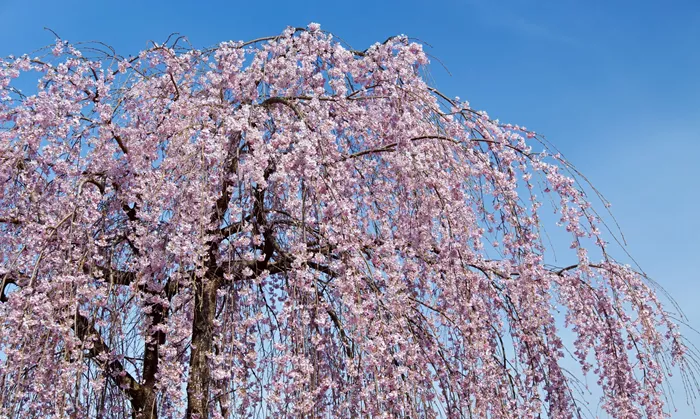Weeping cherry trees are a stunning addition to any garden. Their graceful, cascading branches and delicate blossoms create a breathtaking display in early spring. Many gardeners eagerly anticipate their bloom, as it signals the arrival of warmer weather. But when exactly do weeping cherries bloom? The answer depends on several factors, including climate, variety, and care. Understanding their blooming cycle can help you prepare for a spectacular floral show each year. In this article, we will explore when weeping cherries bloom, what affects their flowering time, and how to ensure healthy blossoms.
When Do Weeping Cherry Trees Bloom?
Weeping cherry trees typically bloom in early to mid-spring, between March and April. However, the exact timing depends on the local climate and tree variety. Warmer regions may see blooms as early as late February, while colder areas may experience flowering in April or early May.
The bloom period lasts for about one to two weeks, depending on weather conditions. Cool temperatures can prolong flowering, while heavy rain or strong winds may shorten it. The blossoms start as small buds that gradually open into pink or white flowers, transforming the tree into a stunning spectacle.
Factors That Affect Blooming Time
Several factors influence when weeping cherry trees bloom:
1. Climate and Weather Conditions
Temperature plays a crucial role in determining bloom time. Warmer regions experience earlier blooms, while colder areas delay flowering. A sudden warm spell in late winter can trigger early blossoms, but a late frost may damage them.
2. Tree Variety
Different weeping cherry varieties bloom at slightly different times. Some popular varieties include:
Prunus subhirtella ‘Pendula‘ – Typically blooms in early spring.
Prunus ‘Snow Fountains’ – Blooms slightly later than other varieties.
Prunus serrulata ‘Kiku-Shidare-Zakura’ – Produces double flowers and may bloom later in spring.
3. Tree Age
Younger trees may take a few years to establish before they begin blooming regularly. A newly planted weeping cherry may not produce abundant flowers until it is at least three to five years old.
4. Soil and Nutrition
Healthy soil and proper fertilization support blooming. Weeping cherries thrive in well-draining soil enriched with organic matter. A balanced fertilizer applied in early spring can enhance flowering.
5. Pruning and Maintenance
Pruning at the right time ensures healthy growth and abundant blossoms. The best time to prune a weeping cherry tree is after flowering, as cutting branches too early may remove flower buds.
How to Encourage More Blooms
If your weeping cherry tree is not blooming as expected, consider these tips:
Ensure Proper Sunlight – Weeping cherries need at least six hours of direct sunlight daily.
Water Regularly – Consistent watering, especially during dry periods, prevents stress.
Use the Right Fertilizer – A fertilizer rich in phosphorus promotes flowering.
Prune Wisely – Remove dead or weak branches, but avoid over-pruning.
Common Problems Affecting Blooming
1. Late Frost Damage
A late freeze can harm flower buds, preventing them from opening. If frost is expected, cover the tree with a light sheet overnight.
2. Pest and Disease Issues
Pests like aphids and diseases such as fungal infections can weaken the tree. Regular inspections and treatments with organic insecticides or fungicides help protect blooms.
3. Over-Fertilization
Too much nitrogen encourages leafy growth at the expense of flowers. Use a fertilizer that is low in nitrogen and high in phosphorus for better blooms.
4. Improper Pruning
If pruned at the wrong time, you may cut off flower buds before they bloom. Always prune after the flowering season.
Conclusion
Weeping cherry trees are a breathtaking sight when they bloom in early to mid-spring. Their flowering time depends on climate, variety, and care. By providing proper sunlight, watering, fertilization, and pruning, you can enjoy a vibrant display of blossoms each year. If your tree is not blooming, addressing common issues can help restore its beauty. With the right care, your weeping cherry will continue to bring joy and elegance to your garden for years to come.
4 FAQs About Weeping Cherry Blooming
1. How long do weeping cherry blossoms last?
Weeping cherry blossoms typically last one to two weeks, depending on weather conditions. Cooler temperatures can extend the bloom period.
2. Do weeping cherries bloom every year?
Yes, healthy weeping cherry trees bloom annually. However, factors like poor soil, lack of sunlight, or incorrect pruning can affect flowering.
3. Can I grow a weeping cherry tree in a colder climate?
Yes, but choose a cold-hardy variety and protect young trees from harsh winter conditions. Applying mulch around the base helps insulate the roots.
4. Why is my weeping cherry tree not blooming?
Common reasons include inadequate sunlight, nutrient imbalances, pruning mistakes, or late frost damage. Addressing these issues can restore blooming.


